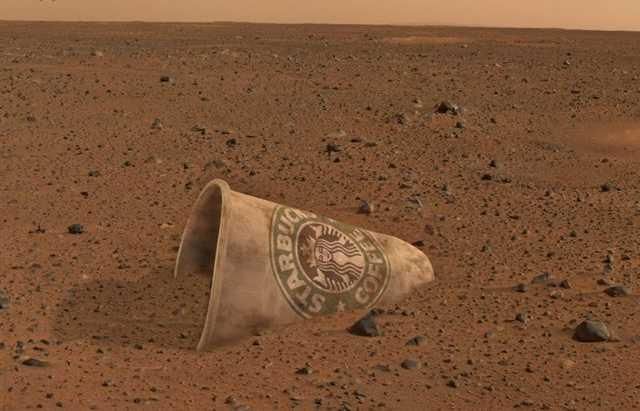You are using an out of date browser. It may not display this or other websites correctly.
You should upgrade or use an alternative browser.
You should upgrade or use an alternative browser.
*** The Official Astronomy & Universe Thread ***
- Thread starter PermaBanned
- Start date
More options
Thread starter's postsUnless the cameras have picked up a bug walking in the area then can't see it being anything else surely?
I think from what I read it is something in the soil, so hopefully something to do with ancient life!
Associate
- Joined
- 22 Nov 2012
- Posts
- 7
I think the universe and all the secrets it holds are amazing. I am not sure where I stand on the whole 'an asteroid came down and populated/seeded our planet' but I am sure that there is life out there somewhere - be pretty arrogant to think we are the only living things in the whole universe.
If we were seeded from another planet and if conditions for life have to be like our own then there is every chance that aliens would look similar to ourselves.
If we were seeded from another planet and if conditions for life have to be like our own then there is every chance that aliens would look similar to ourselves.
Dont know if anyone would be interested but a free online course starts today callied Introduction to Astronomy by Duke Univerisity, Should be good
https://www.coursera.org/#course/introastro
Soldato
- Joined
- 9 Nov 2003
- Posts
- 9,515
- Location
- The Motor City
The Weather Channel here just did a segment about new evidence of life found on Mars Nov 29 2012. I missed it and I can't find anything about it online (so far). Has anyone else heard anything about this?
edit: I'm not sure if it was an update on what SAM found, or if they were just telling that story again. Maybe it wasn't anything interesting.
edit2: Probably this stuff: http://www.space.com/18626-nasa-mars-rover-secret-discovery-speculation.html . So we won't know anything until after the conference in California on Dec 3.
edit: I'm not sure if it was an update on what SAM found, or if they were just telling that story again. Maybe it wasn't anything interesting.
edit2: Probably this stuff: http://www.space.com/18626-nasa-mars-rover-secret-discovery-speculation.html . So we won't know anything until after the conference in California on Dec 3.
Last edited:
The Weather Channel here just did a segment about new evidence of life found on Mars Nov 29 2012. I missed it and I can't find anything about it online (so far). Has anyone else heard anything about this?
edit: I'm not sure if it was an update on what SAM found, or if they were just telling that story again. Maybe it wasn't anything interesting.
There's been a thread about this:
http://forums.overclockers.co.uk/showthread.php?t=18462585
which was laid to rest by this:
http://www.techradar.com/news/world...discovery-isnt-earthshaking-after-all-1115437
http://www.jpl.nasa.gov/news/news.php?release=2012-377]
Basically "One for the history books" was the rover having a go with one of the samplers? NASA Logic!
Basically "One for the history books" was the rover having a go with one of the samplers? NASA Logic!
Soldato
- Joined
- 9 Nov 2003
- Posts
- 9,515
- Location
- The Motor City
Hmm. Wonder why TWC made such a big deal about it this morning then. Oh well. Maybe I'll catch a replay sometime.There's been a thread about this:
http://forums.overclockers.co.uk/showthread.php?t=18462585
which was laid to rest by this:
http://www.techradar.com/news/world...discovery-isnt-earthshaking-after-all-1115437
Thanks!
Galaxy 13.3 billion light years away pictured: http://www.slate.com/blogs/bad_astr...ly_observed_using_hubble_space_telescope.html
It's hard to imagine that light has had to travel almost the entire distance of the known Universe to reach us!
I have an odd musing about this when I see pictures of the deepfield or any other long range image.
Something I've always wondered if how much of that galaxies light has actually travelled to us.
Obviously the image looks like a blob because the sensor pixel size is mahoosivee compared to the focus necessary from that distance.
However if we theoretically created a sensor pixel the size of a particle, would it still be a blob of light or detailed??
I just don't understand how something so huge can be focussed onto something so small without all the light particles becomes squished together, and that applies to anything outside our galaxy.
Last edited:
I have an odd musing about this when I see pictures of the deepfield or any other long range image.
Something I've always wondered if how much of that galaxies light has actually travelled to us.
Obviously the image looks like a blob because the sensor pixel size is mahoosivee compared to the focus necessary from that distance.
However if we theoretically created a sensor pixel the size of a particle, would it still be a blob of light or detailed??
I just don't understand how something so huge can be focussed onto something so small without all the light particles becomes squished together, and that applies to anything outside our galaxy.
There would be no blob of light as you could just zoom in on the galaxy and you would see something highly detailed images along the lines of the andromeda galaxy or eagle nebula.
There would be no blob of light as you could just zoom in on the galaxy and you would see something highly detailed images along the lines of the andromeda galaxy or eagle nebula.
But how, zooming in would require the ability to distinguish the gaps between the particles. I find this very hard to visualise and explain. Let say trillions and trillions of particles are flying in our direction, and they have come from the top and bottom of the galaxy, so lightyears apart, but at angles so that they are eventually focused onto something the size of a telescope mirror. How can there be any gaps between the particles by the time they reach us. There must imo be a theoretical limitation to telescopes no matter how good their resolution is.




